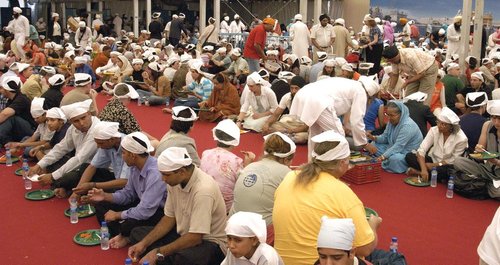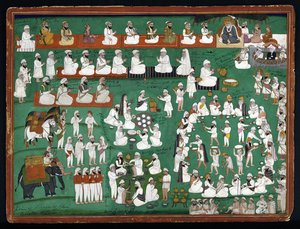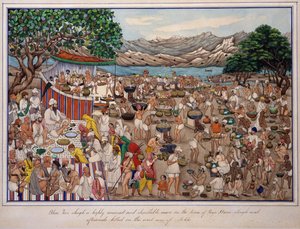

Significance of Langar (Community Kitchen) in Sikhism

Langar, a communal kitchen found in every Sikh gurdwara, holds profound significance within Sikhism, embodying principles of equality, community service, and humility. This article explores the origins, contemporary practice, and spiritual significance of langar, shedding light on its role as a cornerstone of Sikh tradition.
Introduction: Understanding Langar
Langar, derived from the Persian word “langar,” meaning “kitchen,” symbolizes the egalitarian ethos of Sikhism. In every gurdwara, regardless of geographical location, langar offers free meals to all, without discrimination based on religion, caste, gender, economic status, or ethnicity. The practice of langar exemplifies the Sikh principle of seva, or selfless service, and serves as a tangible expression of the Sikh commitment to equality and compassion.
Origins of Langar: A Tradition of Compassion
The origins of langar can be traced back to the founder of Sikhism, Guru Nanak Dev Ji, who initiated the practice in the early 16th century. Guru Nanak Dev Ji’s vision of langar was rooted in compassion and inclusivity, as he sought to break down social barriers and foster a sense of unity among diverse communities. Langar was envisioned as a space where people from all walks of life could come together, share a meal, and experience the spirit of brotherhood.
Evolution of Langar: From Guru Nanak Dev Ji to Guru Angad Dev Ji
Under the leadership of Guru Nanak Dev Ji and his successors, langar evolved into a central institution within Sikhism. Guru Angad Dev Ji, the second Sikh Guru, played a pivotal role in systematizing the langar tradition, establishing it as an integral part of Sikh worship. Guru Angad Dev Ji emphasized the importance of langar as a symbol of equality and hospitality, where all individuals, regardless of social status, could dine together in a spirit of humility and camaraderie.
Guru Amar Das Sahib Ji and the Institutionalization of Langar
It was Guru Amar Das Sahib Ji, the third Sikh Guru, who institutionalized langar as a prominent feature of Sikh practice. Guru Amar Das Sahib Ji expanded the langar system, requiring visitors to the gurdwara to partake in the communal meal before engaging in any other activities. By mandating langar attendance, Guru Amar Das Sahib Ji reinforced the values of equality and community participation, ensuring that langar remained at the heart of Sikh worship.
Contemporary Practice: The Universal Appeal of Langar
In modern times, langar continues to thrive as a symbol of Sikh identity and values. Gurdwaras around the world, from Punjab to London to New York, host langar services that attract diverse communities, including Sikhs, non-Sikhs, and the homeless. Volunteers, known as sevadars, play a crucial role in preparing, serving, and cleaning up after langar, embodying the spirit of selfless service and community engagement.
Spiritual Significance: Langar as a Symbol of Oneness
Beyond its practical function of providing sustenance, langar holds deep spiritual significance within Sikhism. The communal meal represents the idea of oneness, emphasizing the interconnectedness of all beings and the importance of sharing resources with others. By partaking in langar, individuals not only nourish their bodies but also cultivate a sense of unity and compassion towards fellow human beings.
Conclusion: Embracing the Spirit of Langar
In conclusion, langar stands as a testament to the core values of Sikhism, including equality, compassion, and community service. From its humble origins in the teachings of Guru Nanak Dev Ji to its widespread practice in gurdwaras worldwide, langar continues to serve as a powerful symbol of Sikh identity and solidarity. As Sikhs and non-Sikhs alike come together to share a meal in the langar hall, they embody the timeless message of Guru Nanak Dev Ji: “Recognize the whole human race as one.”


